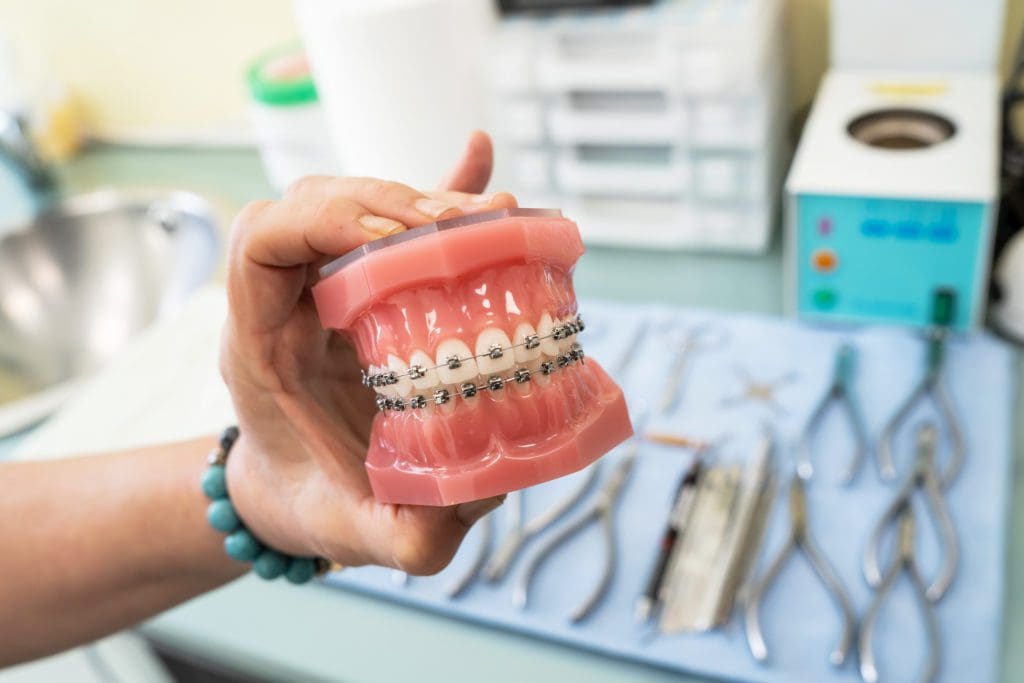How Cumming Orthodontics Can Change Your Smile with Invisalign and Braces
How Cumming Orthodontics Can Change Your Smile with Invisalign and Braces
Blog Article
Comprehensive Overview to Orthodontics Procedures for Dealing With Oral Misalignments
Recognizing the ins and outs of each treatment, including their devices, advantages, and potential drawbacks, is critical in making educated choices about one's orthodontic treatment. As we navigate via the detailed overview to orthodontic procedures for dealing with oral misalignments, the elaborate details of each method will certainly unravel, shedding light on the path towards a harmonious and useful oral alignment.
Orthodontic Procedures Introduction

In addition to clear aligners and traditional braces, orthodontists might additionally recommend various other interventions like headgear, palatal expanders, or retainers to address certain placement concerns (cumming braces). These treatments are customized to every client's unique demands and might include a combination of therapies to achieve the desired results. Routine modifications and tracking are important parts of orthodontic treatment to make certain development is on track and to make any required alterations along the way. By going through orthodontic procedures, clients can not only attain a straighter smile however likewise enhance their general dental health and wellness and function.
Traditional Dental Braces: How They Function
When considering orthodontic treatments for dental imbalances, standard dental braces attract attention as a time-tested method for remedying teeth positioning. Typical dental braces contain brackets, wires, and bands that collaborate to use constant stress on the teeth, gradually moving them into the desired placement. The brackets are connected to the teeth making use of an unique adhesive, and the cables are threaded through the braces. By adjusting the stress of the wires, orthodontists can manage the instructions and force applied to each tooth, guiding them into correct placement in time.
As pressure is applied to the teeth through the dental braces, the bone bordering the teeth is improved to support the new tooth settings. Patients will certainly need routine changes at the orthodontist's workplace to make sure the dental braces proceed to use the correct pressure for efficient teeth movement.
Unnoticeable Aligners: Benefits And Drawbacks
Undetectable aligners use a practical and discreet alternative to traditional braces for remedying dental misalignments. These clear, tailor-made trays are basically undetectable when worn, making them an attractive option for people looking for a much more aesthetically pleasing orthodontic treatment. One of the primary benefits of invisible aligners is their removability, allowing for simpler maintenance of dental hygiene contrasted to conventional braces. Clients can remove the aligners prior to eating or brushing their teeth, reducing the danger of food getting embeded the device and streamlining the cleaning process.

Surgical Orthodontic Options
Surgical interventions in orthodontics existing practical options for dealing with intricate oral misalignments that might not be successfully solved with traditional orthodontic therapies. While standard dental braces and unseen aligners can remedy numerous orthodontic problems, certain instances require surgical intervention to achieve optimum outcomes. Surgical orthodontic choices are commonly advised for extreme malocclusions, significant jaw discrepancies, and instances where the underlying bone structure needs alteration to attain proper placement.
One typical surgical orthodontic procedure is orthognathic surgical treatment, which entails repositioning the jaws to remedy useful issues such as trouble chewing or talking. This surgery is typically done in partnership with an orthodontist who assists straighten the teeth before and after the treatment. Surgical orthodontics might additionally include treatments to subject influenced teeth, eliminate excess periodontal cells, or reshape the jawbone to produce a more unified facial profile.
Before considering surgical orthodontic choices, individuals undertake an extensive analysis to establish the need and possible benefits of such interventions. cumming braces. While surgery may seem overwhelming, it can substantially boost both the function and appearances of the smile in instances where conventional orthodontic therapies drop short
Retainers and Post-Treatment Care

Failing to conform with post-treatment treatment instructions can result in relapse, where the teeth gradually relocate back towards their initial positions. Consistent retainer wear, great dental hygiene, and normal dental examinations are necessary for maintaining the outcomes achieved via orthodontic surgical treatment and guaranteeing the lasting stability of the fixed dental placement.
Final Thought
In verdict, orthodontic procedures offer various choices for dealing with oral misalignments. Surgical orthodontic alternatives are readily available for much more serious imbalances. On the whole, orthodontic procedures can efficiently boost oral health and wellness and aesthetic look.
As we browse via the detailed overview to orthodontic treatments for remedying oral misalignments, the detailed information of each approach will certainly unfold, dropping light on the course towards a harmonious and functional dental positioning. - aligners
One of the most common orthodontic therapies is the use of dental braces, which consist of metal braces and cables that apply mild stress to gradually move teeth right into the preferred placement.When considering orthodontic treatments for dental misalignments, typical dental braces stand out as a reliable method for fixing teeth positioning. Furthermore, undetectable aligners may not be suitable for complex orthodontic concerns that require even more substantial teeth activity, as they are normally suggested for moderate to moderate situations. Retainers are customized orthodontic tools developed to hold teeth in their dealt with positions after the find a good dentist completion of orthodontic therapy.
Report this page